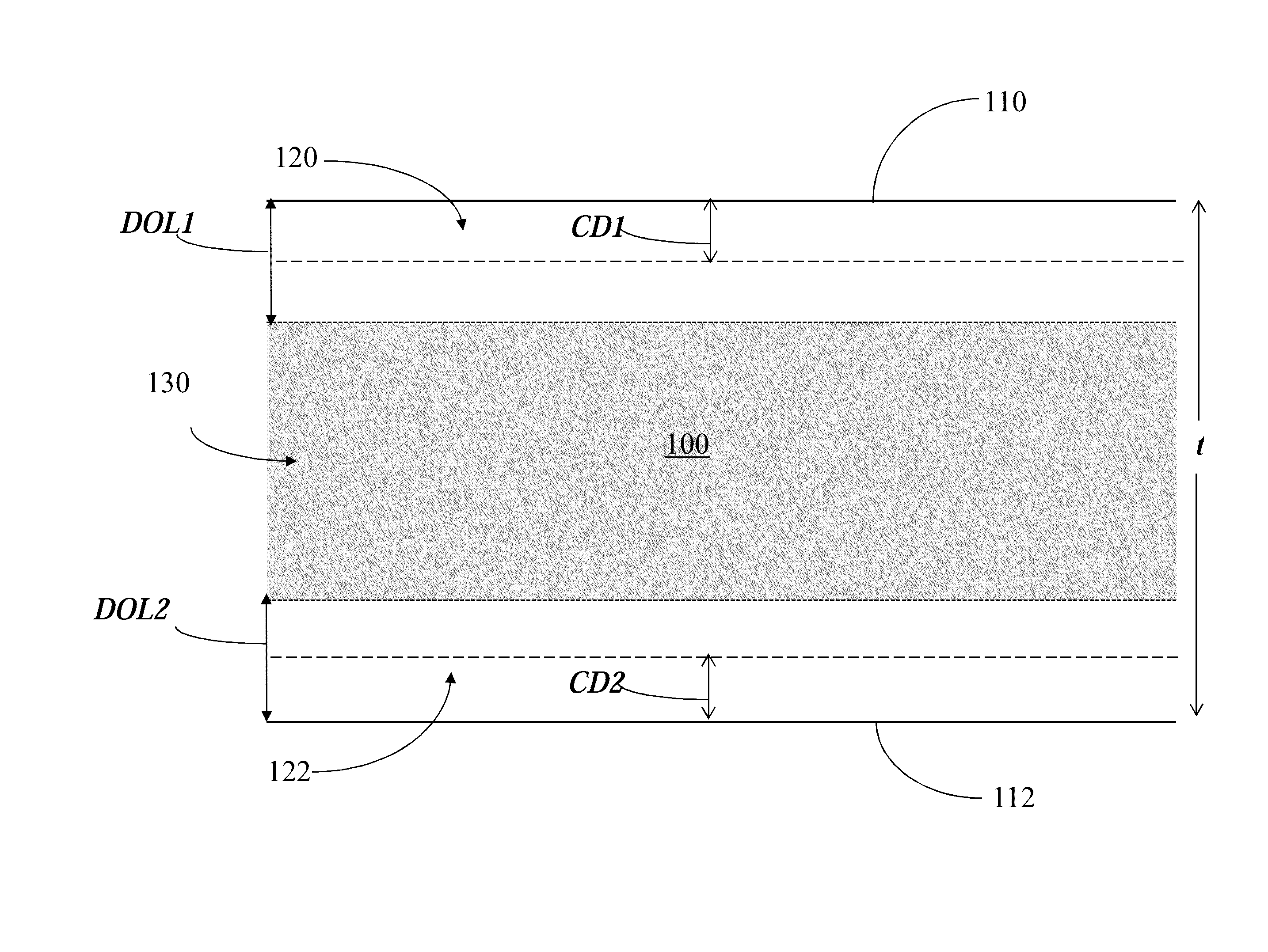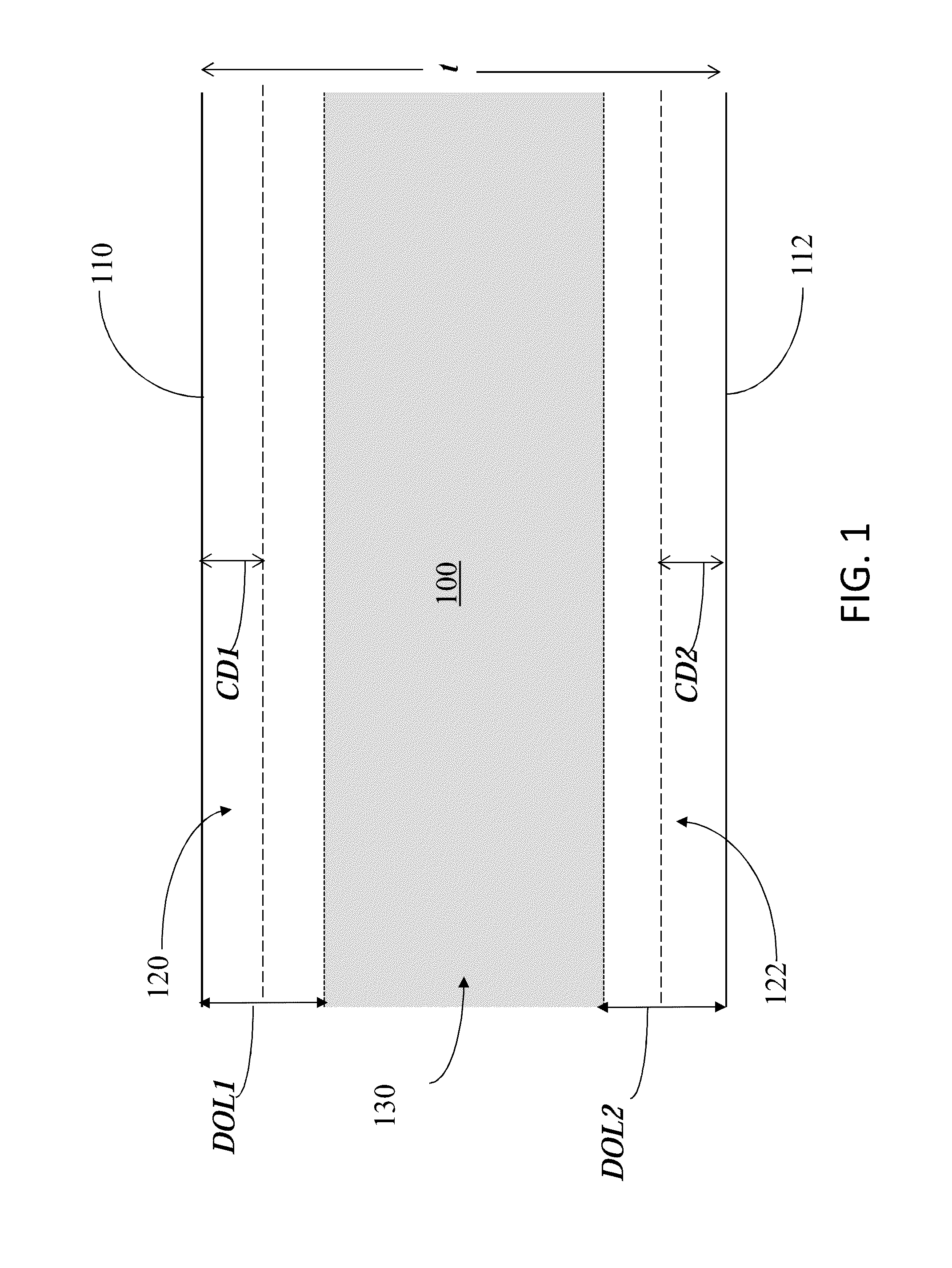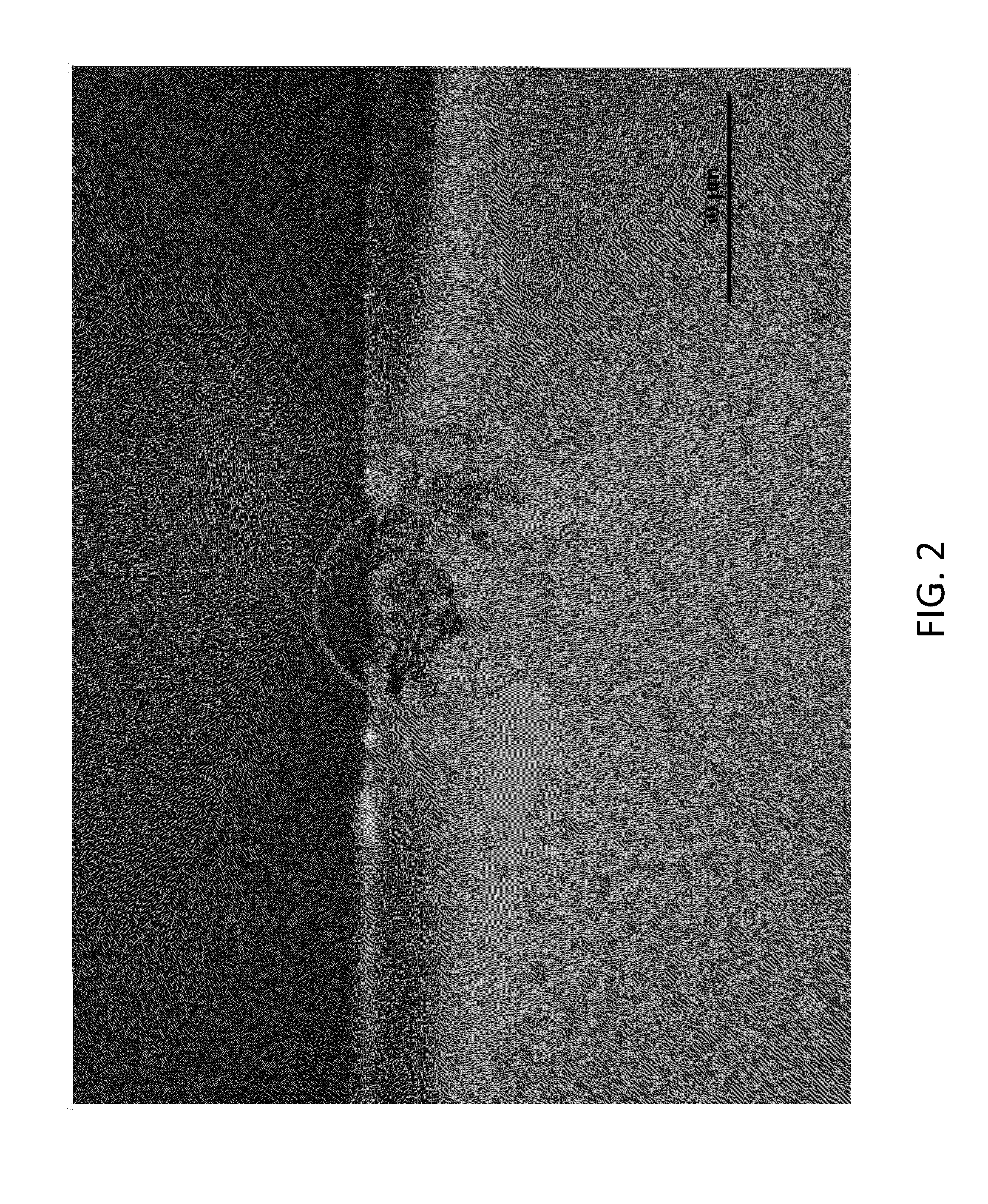Strengthened glass articles having improved survivability
a technology of reinforced glass and survivability, which is applied in the direction of electrical equipment, using mechanical means, synthetic resin layered products, etc., can solve the problems of glass panel including the cover glass being prone to fracture, and achieve the effect of increasing the drop heigh
- Summary
- Abstract
- Description
- Claims
- Application Information
AI Technical Summary
Benefits of technology
Problems solved by technology
Method used
Image
Examples
example 1
[0098]In the comparative examples, the glass used as a basis for the comparison in the control and experimental glasses below had the following composition in wt %:58.5% SiO2, 21.51% Al2O3, 5.2% B2O3, 13.01% Na2O, 0.02% K2O, 1.51% MgO, 0.03% CaO, and 0.18% SnO2.
[0099]As shown in Table 1 below, the control strengthened glass was ion exchanged for 5 hours at 430° in a KNO3 bath to yield a CSs=805 MPa, and a DOL=40 μm. The experimental strengthened glass was ion exchanged for 27 hours at 450° in a KNO3 bath to yield a CSs=376 MPa, and a DOL=97 μm in accordance with the present disclosure. These CSs and DOL values were computed using FSM. The test method was initially performed beginning at a height of 20 cm and was increased at 10 cm increments for subsequent drops until reaching a maximum height of 220 cm. The drop height for failure was recorded as a metric for both angled drops and flat face drops. The drop surface was a 180 grit alumina sandpaper upper surface disposed on a steel p...
example 2
[0101]Additionally, another drop test experiment was conducted for a strengthened glass having a DOL=151 using the same procedure as that used in Example 1. The strengthened glass composition in wt % was approximately: 47.93% SiO2, 23.31% Al2O3, 12.73 P2O5, 14.37% Na2O, 1.56% MgO, and 0.11% SnO2. The glass was ion exchanged to yield approximately a CSs=232 MPa, and a DOL=151 μm as computed via FSM. The strengthened glass had a 1 mm thickness and was incorporated into a smartphone device. Upon conducting the same drop testing procedure as that used in Example 1, the glass survived 5 flat face drops at a 220 cm height, and also survived 5 30° angle drops at a 220 cm height.
example 3
[0102]In this example, an exemplary 3D shape glass having a thickness of 0.8 mm, dimensions of 55.9 mm×121.0 mm, and a bend radius of 3 mm was tested. The glass had a composition in wt % as follows: 61.22% SiO2, 16.03 wt % Al2O3, 0.62% B2O3, 13.85% Na2O, 3.55% K2O, 3.7% MgO, 0.5% CaO, 0.52% SnO2, and 0.1% ZrO2.
[0103]The glass underwent a single ion exchange to yield a CSs=787 MPa and a DOL=95 μm as computed via FSM. Flat face drop tests were performed starting at a 30 cm drop height with increasing increments of 10 cm up to a max height of 200 cm. The glass was dropped 4 times from a 200 cm height and demonstrated no breakage or fracture.
PUM
| Property | Measurement | Unit |
|---|---|---|
| thickness | aaaaa | aaaaa |
| height | aaaaa | aaaaa |
| non-flat angle | aaaaa | aaaaa |
Abstract
Description
Claims
Application Information
 Login to View More
Login to View More - R&D
- Intellectual Property
- Life Sciences
- Materials
- Tech Scout
- Unparalleled Data Quality
- Higher Quality Content
- 60% Fewer Hallucinations
Browse by: Latest US Patents, China's latest patents, Technical Efficacy Thesaurus, Application Domain, Technology Topic, Popular Technical Reports.
© 2025 PatSnap. All rights reserved.Legal|Privacy policy|Modern Slavery Act Transparency Statement|Sitemap|About US| Contact US: help@patsnap.com



